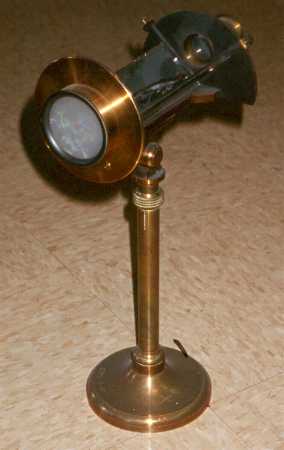| The Kaleidoscope was invented by the Scottish physicist
David Brewster (1781-1868). His scientific work centered around the properties
of light; he never fully accepted the wave theory of light, although he admired
the way in which it explained many phenomena of optics. In 1816-7 he developed
the Kaleidoscope, whose name is based on the Greek root kalos, meaning beautiful,
and in 1819 he published "A Treatise on the Kaleidoscope." The little instrument
became a fad and could not be manufactured fast enough to satisfy public
demand. Interest in the kaleidoscope has remained high to this day, both
among children and adults.
The basic Kaleidoscope has two mirrors inclined at
an angle of sixty degrees to each other. This produces five virtual images,
each sixty degrees wide.
This Kaleidoscope in the Garland Collection of Classic
Physics apparatus at Vanderbilt University is by Duboscq, and cost 130 francs
(about $25) when it was purchased ca. 1875.
|

|